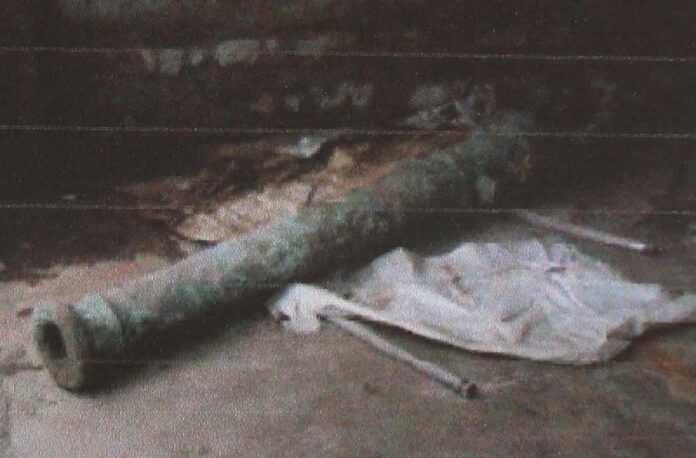
(21 March) Police in Ranong province have saved the scraps of a 500 year old Portuguese cannon from the temple furnace where local monks intended to turn the artifacts into a Buddha figure.
The authorities have received previous reports that Wat Suwankiriviharn Temple would fuse the said cannon with other substances to construct a 3-metre tall Buddha statue on Friday.
Concerned that the artifact would be irreparably damaged, officials of Department of Fine Arts urged the police in Ranong to raid the temple and confiscate the cannon.
The police, accompanied by a team of experts from Department of Fine Arts, arrived at Wat Suwankiriviharn at around 15.00 yesterday and met with the abbot to discuss the issue. The temple staff offered no resistance, showing the officers to their store room where the cannon was held.
Nevertheless, the cannon had already been smashed into 56 pieces of metal scraps on the order of the temple monks, in preparation for the scheduled casting ceremony.
Mr. Thawatchai Chanpaisalsilpa, an archaeologist from the Department of Fine Arts, said initial inspection indicated that the cannon was a Portuguese-made weapon dating back to 16th century.
Two of the cannon scraps recovered by the police also showed a national emblem of Portugal and an insignia of the globe, similar to the signs on the ancient cannons placed in the compound of the Embassy of Portugal in Bangkok, Mr. Thawatchai added.
Temple staff told the police that local fishermen had uncovered the cannon as they were sailing near the Nicobar Islands in the Andaman Sea several years ago. According to Mr. Thawatchai, the cannon, in its original form, would have been 2.5 meters long and weighed 437 kg.
However, when the police scaled the scraps, the total weight of the smashed cannon was only 399 kilograms, causing the police to suspect that some pieces had been stolen or withheld by temple staff.
"The cannon represents historical evidence of the sailing, trade, and cultural exchange in the Andaman Sea, which was an important sea trade network" Mr. Thawatchai said, "It's a pity the cannon has been reduced to scraps".
The police said, after their investigation, that they intend to prosecute those who were involved in the destruction of the cannon, as the artifact is protected under the 1961 Act on Ancient Monuments, Antiques, Objects of Art and National Museums, which bans any action that vandalises historic artifacts.
Mr. Thawatchai also told our correspondent that the incident is the first offence under the 1961 law he has come across in his working life.










































